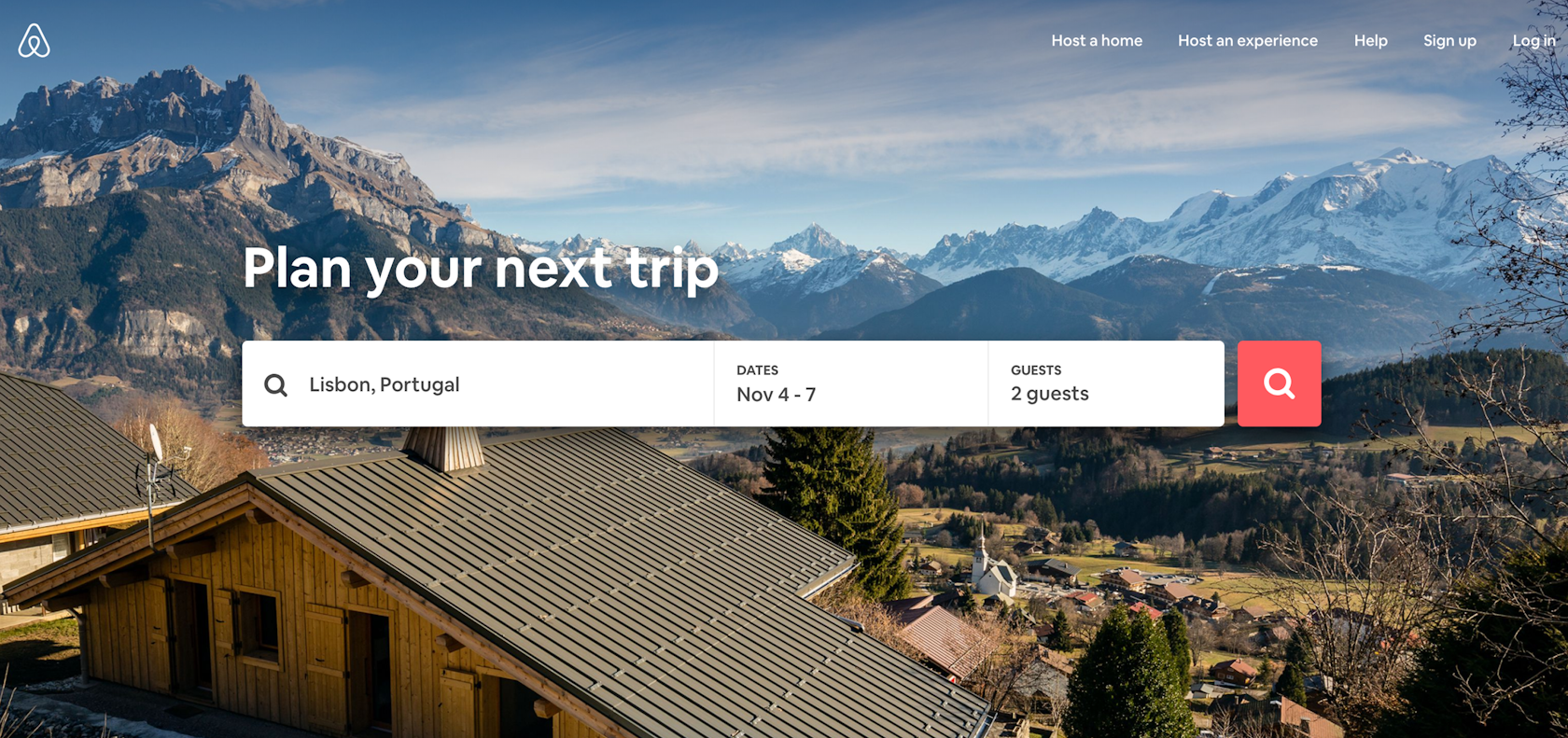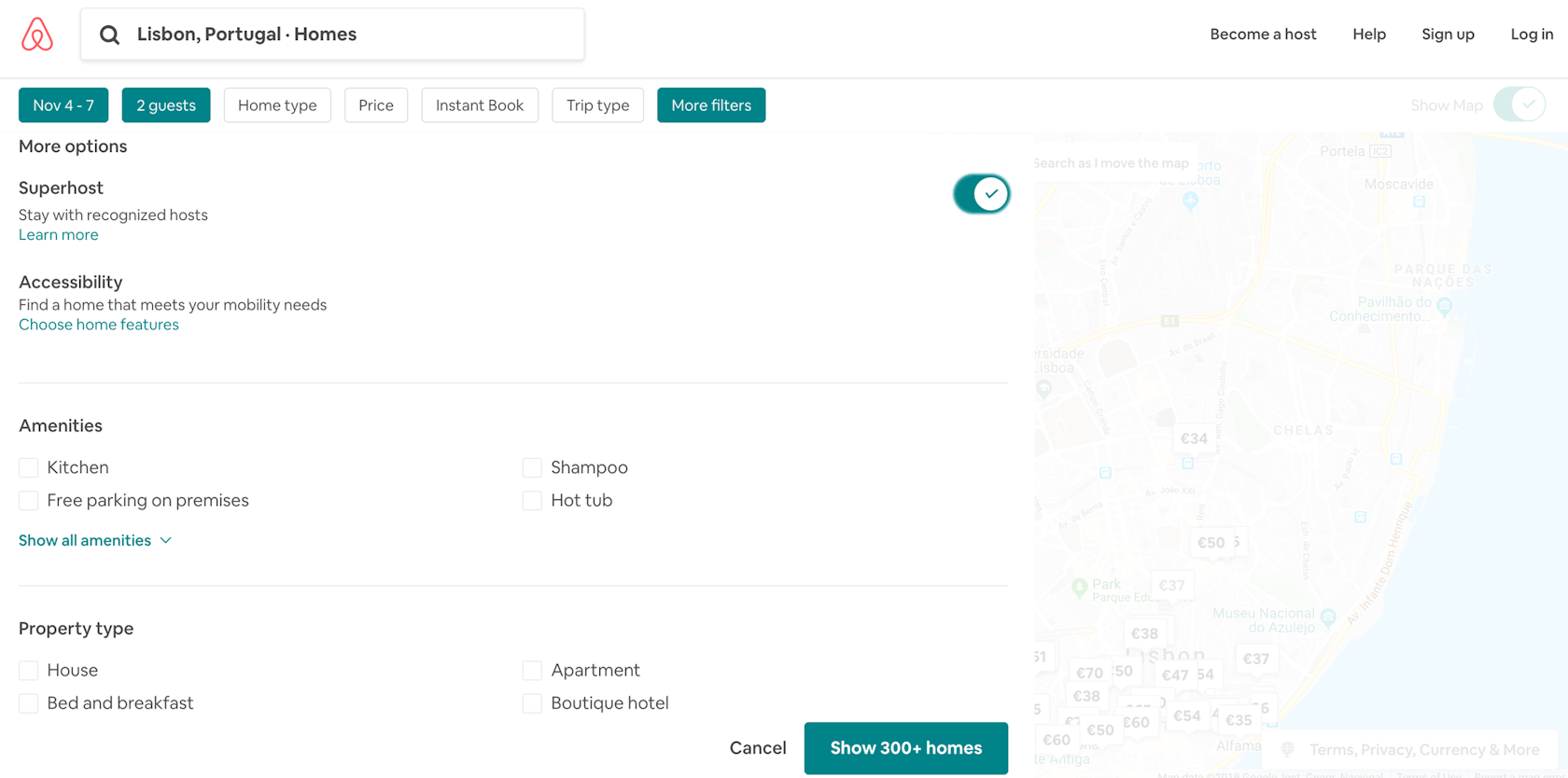
How to Build an App Like Airbnb: Comprehensive Guidance
Statista Digital Market Outlook estimates that global travel app revenue is expected to grow by 17 percent in 2023 year-on-year to nearly $400 million.
So, in this article, we’ve prepared information about the essential features of Airbnb-like websites or apps and an estimate of how much it would cost to develop a platform like Airbnb, including some tips on app functionality, development technology, and prices.
WHAT MAKES AIRBNB SO SUCCESSFUL: HOW THE AIRBNB APP WORKS
In simple terms, Airbnb is an accommodation-sharing website, where you can rent out a property (house, apartment, bedroom) or find a place to stay short term.

More precisely, Airbnb is a peer-to-peer (P2P) marketplace. It uses the sharing economy business model where one person offers access to services or goods to another person for a fee. You can also call it P2P renting.
A huge advantage of starting a marketplace like Airbnb is that it doesn't require to own any properties. Instead, it facilitates interactions between hosts and guests. It is free to create an account, for both parties, but the company does charge a commission from hosting (3%) and renting (6-12%) from every booking.
Guests can search for accommodations through a number of filters, aside from the primary ones that are location, duration of stay, and the number of guests. After the booking is made, the host and guest can arrange a time and place to meet based on the guest's arrival time.

HOW TO BUILD AN APP LIKE AIRBNB
Before taking on a fully-fledged application, it’s good to start with an MVP — a version of your project that has the minimum set of features to show you the maximum useful data. So, to develop to create your own Airbnb website start with these steps.
Define your goals and requirements
Here are some questions and criteria that will help you.
#1. What problem is your startup designed to solve?
How can people benefit from it? Essentially, you need to pre-define the value of your services to the target audience.
#2. What is your target audience?
It goes along with the previous question and defines the whole course of action. Are your potential users/clients students or freelance working travelers, is it a specific age group or a whole range or different ages?
Tip: Defining the target audience will help you identify what filters you need. Could they be traveling with pets or listing a property where pets are allowed? That option should definitely be in the filters.
#3. Who are you up against?
It's important to look realistically at your competition before you make an Airbnb-like site. Analyze what set of features they offer and if your service can be more beneficial to your potential clients than that of your competitors.
Tip: It’s not just other Airbnb-like websites you are up against. Don’t rule out retail platforms that allow users to list all kinds of products and services, including renting out an apartment. Look at their functionality and capabilities to see if it has something that could be beneficial to your website.
#4. What is the customer's experience like?
Think about the website you are going to build and the functions you are going to offer from the client's' point of view. If you were a client, how would you search for the services you need, and what kind of information would you need to reach your goal.
#5. Who will develop the product?
Think about the team you will work with: in-house or with an outsourcing agency, or even hire a freelancer. This is one of the most important points, and therefore study in detail the portfolio, reviews, and work process of the experts you have chosen.
Make a list of features
After answering the questions, it's good to have a list of all the features you want your website application to have. What is needed to develop Airbnb clone? Decide which ones are most important to release with the launch of the website.
Finalize the budget and create a roadmap
The stage at which the vision, all the requirements for the product and technology stack have already been formed, the cost has been calculated and sprints have been planned.
Stay up to date with product development and testing
With well-established processes with a development team, you, as a customer, are constantly inside the process, and have access to tools and documentation that allow you to control development. If you start with an MVP, then with a competent team you can get the release of the first version of your application in a month.
Improve your product
Based on the first feedback, together with the development team, plan the next versions of the application, add functionality, and improve the design and user experience.
MAIN FEATURES OF THE AIRBNB-LIKE APP
Starting an Airbnb-like marketplace, be prepared for an interesting case. With house rental platforms, you are essentially creating three products in one: an interface for guests to find a property; an interface for hosts to list their properties for rent; and an interface for managing interactions between hosts and guests.
If you are building an MVP of such a website, it’s important to distinguish which features will go first. For example, a website like that can’t properly function without a search by location, check-in/out dates, and the number of guests. On the other hand, you can do without a host interface and let the site administration handle the properties.
Your features’ list will influence the cost of developing an Airbnb site since it takes time to develop them. Before you make a short list, let’s review all the different features Airbnb-like websites might have:
HOST FEATURES
- ID verification for safety purposes;
- Setting rules for property availability, such as min/max duration of stay;
- Approval of guest applications;
- Calculating how much you can earn per month;
- Best price recommendations per night and during holidays;
- Payments after check-ins via different methods: PayPal, wire transfers, direct deposit, etc.;
- Payment guarantees (in case a guest doesn’t pay/show up/cancels the booking);
- 24/7 customer support (chat or calls).
GUEST FEATURES
- Instant booking: no approval required from the host;
- Search by property or experience;
- Map with property location
- Online chat with the host;
- Access to the host’s phone number (for communicating via SMS);
- Host, traveler, and website’s recommendations;
- 24/7 customer support (chat or calls);
- Guest reviews.
SEARCH FILTERS
- Price range: some websites put up the lowest and highest available price for the current search;
- Home type: entire property, private room, shared room;
- Property type: house, apartment, room, BB, loft, etc.;
- Type of trip: family vacation, work;
- Amenities: kitchen, A/C, heater, Wifi;
- Facilities in the home: gym, hot tub, pool;
- Unique home types: treehouse, boat, yurt;
- Neighborhood: if there is city district distinction;
- Host’s language
- Property rules: no smoking, pets allowed;
- Accessibility for mobility needs: wheelchair ramp, lift.

You might want to put all of these features on your list or maybe even add some of your own. However, if you want to start a website similar to Airbnb as soon as possible, it’s better to define which of them are the most useful — that should be enough for the first launch.
What Technologies are necessary to Build a Website Like Airbnb from Scratch?
Airbnb uses technologies that speed up the development, are flexible and efficient, ensure security and scalability, can store and process millions of images and heavy traffic, and as a result, reduce the cost of development.

Choosing the right technology stack is important for the success of your project. You don’t have to go the same route as Airbnb creators to develop a website like Airbnb and use all of the same technologies, there are equally good software alternatives. Let’s explore some of the most suitable options you can use to make a website like Airbnb.
Backend — use general purpose frameworks, such as Django, Ruby on Rails or Symfony. It’s best to use the framework your developers are most familiar with. For example, our team prefers to use Django.
Frontend — the leading technologies are Angular, React, and Vue. We prefer React.
Storage — for starters, to create an Airbnb marketplace, you would need Postgres or Mysql.
There are other technologies you can add for maintaining more specific parts of your website:
- MongoDB for storing cache;
- Logstash and Elastic for storing logs;
- S3 or Minio for storing documents.
Search — Elastic and Solr are both great options for incorporating search capabilities on your website
HOW MUCH DOES IT COST TO START A SITE LIKE AIRBNB?
ESTIMATED PRICES FOR AN AIRBNB-LIKE WEBSITE
The price for building an Airbnb marketplace depends on your project needs. The table below shows the average time certain tasks require and similar Airbnb app development cost.
| Task/features | Time for development, h | Approximate cost, $ |
| Pre-development (planning, site structure, requirement clarifications, etc.) | 100 | 5,000 |
| General features: - Registration and client profiles; - Property catalog; - Property details. | 330 | 16,500 |
| Editing features: - Editing property details; - Editing available dates and prices. | 220 | 11,000 |
| Renting features: - Rent approval; - Rent cancellation - Payments. | 250 | 12,500 |
| Administrator interface for monitoring and conflict resolution | 250 | 12,500 |
| Other features: - Online chat; - Review and rating system; - Notifications and notification settings. | 240 | 12,000 |
Web design should be estimated separately since it’s a whole other set of tasks. It usually costs up to about 50% of the total cost of the project development and largely depends on what your MVP will include.
WHAT CAN BE CHALLENGING IN LAUNCH OF A WEBSITE LIKE AIRBNB
When you decide to build an Airbnb clone, there are a few things to consider. In addition to the difficulties that may arise during the development process, such as missed deadlines or exceeding budget, there are questions regarding the success of your application's business model.
And if possible difficulties with the development process are solved by choosing a reliable outsourcing partner, then the strategy for monetizing your application lies with you.
Therefore, the following points should be taken into account:
1. Who are your key partners and suppliers and what are their main activities?
2. What are the key activities you provide, what are the distribution channels, and revenue streams?
3. What are the main costs included in your business model, which main activities are the most costly?
4. Through which channels to ensure a constant influx of customers, which channels are the most profitable?
5. What value are your customers really willing to pay for, what methods are they willing to pay, and which are the most preferred.
OUR EXPERIENCE IN DEVELOPING AIRBNB-LIKE WEBSITES
At Gearheart, we have extensive experience in building different types of web applications and have practice solving all sorts of issues that come by. One of our latest projects was, in fact, a P2P platform in the public sector. The key issue with P2P platforms is that they only exist when two parties are involved (e.g., buyers and sellers). We reduced this holdup by incorporating a pre-made database of businesses that could be later claimed by their owners once both parties start interacting.
Read More: How to Build a Peer-to-Peer Marketplace from Scratch?
ADVANTAGES OF WORKING WITH GEARHEARTbuild
We make sure to clarify all the essential information about your future product (the request, project goals, priorities, and product functions).
If you’re hesitant which application features are more important for the first release, we can suggest the best course of action based on our experience.
You can keep track of the development process, getting status updates about each task on the roadmap.
Our experienced developers can produce formidable results as soon as two weeks into the working process.
We work in sprints which allows us to complete tasks more effectively and make timely corrections if needed.
FAQ
- How to develop an app like Airbnb?
If you are building an MVP of such a website, it is important to differentiate which features will come first. For example, such a site cannot work properly without searching by location, arrival/departure date, and number of guests. On the other hand, you can do without the host interface and let the site administration handle the properties. - How much would it cost to build a platform like Airbnb?
MVP development of a similar platform starts from $40,000. - How long development of an app like Airbnb can take?
If you start with MVP you will get the first working version in less than a month. Further, everything depends on the size of the platform, and the process can stretch from several months to a year or more.

